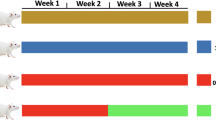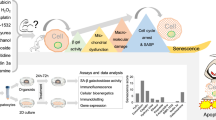Abstract
The effect of GCDC-induced apoptosis on PKC activity and PKC's role in GCDC-induced hepatocyte apoptosis is unclear. The specific aims of this study were to determine if GCDC-induced apoptosis changed intracellular PKC activity and if modulation of PKC activity affected GCDC-induced hepatocyte apoptosis.
Apoptosis was induced in isolated hepatocytes using GCDC. PKC activity was measured and specific PKC and calpain inhibitors were used to study the effects of PKC and calpain modulation on GCDC-induced apoptosis.
After 4 h exposure, 50 μM GCDC induced apoptosis in 42% of hepatocytes. Intracellular PKC activity decreased to 44% of controls 2 h after exposure of hepatocytes to GCDC (p < 0.001). Pre-incubation of hepatocytes with the calpain protease inhibitor restored PKC activity in GCDC exposed hepatocytes to 91± 5% of control cells. Pre-incubation of hepatocytes with a calpain inhibitor decreased GCDC-induced apoptosis as did pre-incubation with the PKC activating phorbol ester, PMA. The combination of calpain inhibition and PMA further reduced GCDC-induced apoptosis but caused low level hepatic apoptosis. Inhibition of PKC with chelerythrine also substantially reduced GCDC-induced hepatocyte apoptosis.
GCDC-induced apoptosis is associated with decreases in total cellular PKC activity, which appear to be dependent on intracellular calpain-like protease activity. The combination of protease inhibition and phorbol ester pretreatment preserved total cellular PKC activity and decreased GCDC-induced apoptosis but induced low level apoptosis in the absence of GCDC exposure. PKC inhibition also decreased GCDC-induced hepatocyte apoptosis highlighting the complex interactions of PKC and proteases during GCDC-induced apoptosis.
Similar content being viewed by others
References
Patel T, Gores GJ: Apoptosis in hepatobiliary disease. Hepatology 21: 1725–1741, 1995
Rosser BG, Gores GJ: Liver cell necrosis: Cellular mechanisms and clinical implications. Gastroenterology 108: 252–275, 1995
Patel T, Roberts L, Jones B et al.: Dysregulation of apoptosis as a mechanism of liver disease: An overview. Seminars in Liver Disease 18: 105–114, 1998
Patel T, Bronk SF, Gores GJ: Increases of intracellular magnesium promote glycodeoxycholate-induced apoptosis in rat hepatocytes. J Clin Invest 94: 2183–2192, 1994
Celli A, Que F: Dysregulation of apoptosis in the cholangiopathies and cholangiocarcinoma. Seminars of Liver Disease 18: 177–185, 1998
Thorgeirsson S, Teramoto T, Factor V: Dysregulation of apoptosis in hepatocellular carcinoma. Seminars in Liver Disease 18: 115–122, 1998
Kohli V, Madden J, Bentley R et al.: Calpain mediates ischemic injury of the liver through modulation of apoptosis and necrosis. Gastroenterology 116: 168–178, 1999
Poupon RE, Balkan B, Eschwege E et al.: A multicenter, controlled trial of ursodiol for the treatment of primary biliary cirrhosis. N Eng J Med 324: 1548–1554, 1991
Wiesner RH: Current concepts in primary sclerosing cholangitis. Mayo Clinic Proc 69: 969–982, 1994
Rodrigues C, Fan G, Ma X et al.: A novel role for ursodeoxycholic acid in inhibiting apoptosis by modulating mitochondrial membrane perturbation. J Clin Invest 101: 2790–2799, 1998
Anwer MS, Engelking LR, Nolan K et al.: Hepatotoxic bile acids increase cytosolic calcium activity of isolated rat hepatocytes. Hepatology 8: 887–891, 1991
Spivey JR, Bronk SF, Gores GJ: Glycochenodeoxycholate-induced lethal hepatocellular injury in rat hepatocytes. Role of ATP depletion and cytosolic free calcium. J Clin Invest 92: 17–24, 1993
Galle PR, Theilmann L, Raedsch R et al.: Ursodeoxycholate reduces hepatotoxicity of bile salts in primary human hepatocytes. Hepatology 12: 486–491, 1990
Greim H, Trulzsch D, Gzygan P et al.: Mechanism of cholestasis 6. Bile acids in human livers with or without biliary obstruction. Gastroenterology 63: 846–850, 1972
Berridge MJ: Inositol triphosphate and calcium signaling. Nature 361: 315–325, 1993
Exton J: Role of inositol triphosphate and diacylglycerol in the regulation of liver function. In: I.M. Arias, J.L. Boyer, N. Fausto et al. (eds). The Liver: Biology and pathobiology. Raven Press, New York, 1994, pp 933–942
Nishizuka Y: Intracellular signaling by hydrolysis of phospholipids and activation of protein kinase C. Science 258: 607–614, 1992
Trump BF, Berzesky IK: The role of cytosolic Ca2+ in cell injury, necrosis and apoptosis. Curr Opin Cell Biol 4: 227–232, 1992
Thomas CE, Reed DJ: Current status of calcium in hepatocellular injury. Hepatology 10: 375–384, 1989
Wang S, Guo C, Castillo A et al.: Effect of bryostatin 1 on taxolinduced apoptosis and cytotoxicity in human leukemia cells (U937). Biochem Pharm 56: 635–644, 1998
Sanchez V, Lucas M, Sanz A et al.: Decreased protein kinase C activity is associated with programmed cell death (apoptosis) in freshly isolated rat hepatocytes. Biosci Rep 12: 199–206, 1992
Zhuang S, Lynch M, Kochevar I: Activation of protein kinase C is required for protection of cells against apoptosis induced by singlet oxygen. FEBS Lett 437: 158–162, 1998
Barr LF, Campbell SE, Baylin SB: Protein kinase C-beta 2 inhibits cycling and decreases c-myc-induced apoptosis in small cell lung cancer cells. Cell Growth Diff 8: 381–392, 1997
Sawai H, Okazaki T, Takeda Y et al.: Ceramide-induced translocation of protein kinase C-delta and-epsilon to the cytosol. Implications in apoptosis. J Biol Chem 272: 2452–2458, 1997
Rosser BG, Powers SP, Gores GJ: Calpain activity increases in hepatocytes following addition of ATP. J Biol Chem 268: 23593–23600, 1993
Bissel DM, Arenson DM, Maher JJ et al.: Support of cultured hepatocytes by a laminin-rich gel. J Clin Invest 79: 801–812, 1987 27
Bronk SF, Gores GJ: pH dependent, non-lysosomal proteolysis contributes to lethal anoxic cell injury of rat hepatocytes. Am J Physiol 264: G744-G751, 1993
Wyllie A: Glucocorticoid-induced thymocyte apoptosis is associated with endogenous endonuclease activation. Nature 284: 555–556, 1980
Oberhammer F, Bursch W, Parzefall W et al.: Effect of Transforming Growth Factor β on cell death of cultured rat hepatocytes. Cancer Res 51: 2478–2485, 1991
Jones BA, Rao YP, Stravitz RT et al.: Bile salt-induced apoptosis of hepatocytes involves activation of protein kinase C. Am J Physiol 272: G1109–1115, 1997
Kerr J, Wyllie A, Currie A: Apoptosis: A basic biological phenomenon with wideranging implications in tissue kinetics. Br J Cancer 26: 239–257, 1972
Hubbard A, Wall D, Ma A: Isolation of rat hepatocyte plasma membranes. J Cell Biol 96: 217–229, 1983
Toomik R, Ekman P, Eller M et al.: Protein kinase assay using tritiated peptide substrates and ferric adsorbent paper for phosphopeptide binding. Anal Biochem 209: 348–353, 1993
Cohen J: Statistical power analysis for behavioral sciences. Hillsdale NJ: L. Erblaum Associates, 1988
Grasl-Kraupp B, Ruttkay-Nedecky B, Koudelka H et al.: In situ detection of fragmented DNA (TUNEL assay) fails to discriminate among apoptosis, necrosis, and autolytic cell death: a cautionary note. Hepatology 21: 1465–1468, 1995
Squier MK, Miller AC, Malkinson AM et al.: Calpain activation in apoptosis. J Cell Physiol 159: 229–237, 1994
Kwo P, Patel T, Bronk S et al.: Nuclear serine protease activity contributes to bile acid induced apoptosis in hepatocytes. Am J Physiol 268: G613-G621, 1995
Nishizuka Y: Studies and perspectives of protein kinase C. Science 233: 305–312, 1986
Al Z, Cohen CM: Phorbol 12-myristate-13-acetate-stimulated phosphorylation of erythrocyte membrane skeletal proteins is blocked by calpain inhibitors: A possible role for protein kinase M. Biochem J 296: 675–683, 1993
Dwyer LD, Miller AC, Parks AL et al.: Calpain-induced down regulation of activated protein kinase C-α affects lung epithelial cell morphology. Am J Physiol 266: L569-L576, 1994
Goldstein P, Ojcius DM, Young D-E: Cell death mechanisms and the immune system. Immunol Rev 121: 29–65, 1991
Baker AL: Liver Chemistry Tests. In: N. Kaplowitz (ed). Liver and Biliary Diseases. Williams and Wilkins, Baltimore, 1992, pp 182–194
Yang J, Liu X, Bhalla K et al.: Prevention of apoptosis by Bcl-2: release of cytochrome c from mitochondria blocked. Science 275: 1129–1132, 1997
Kluck RM, Bossy Wetzel E, Green DR et al.: The release of cytochrome c from mitochondria: a primary site for Bcl-2 regulation of apoptosis. Science 275: 1132–1136, 1997
Golstein P: Controlling cell death. Science 275: 1081–1082, 1997
Dhillon S, Gonzalez B, Chappell C et al.: Glycochenodeoxycholate (GCDC)-induced hepatocyte apoptosis is associated with early modulation of intracellular PKC activity. Hepatology 26:146A, 1997
Kosaka Y, Ogita K, Ase K et al.: The heterogeneity of protein kinase C in rat tissues. Biochem Biophys Res Comm 151: 973–981, 1988
Qiu Y, Ping P, Tang X et al.: Direct evidence that protein kinase C plays an essential role in the development of late preconditioning against myocardial stunning in conscious rabbits and that epsilon is the isoform involved. J Clin Invest 101: 2182–2198, 1998
Nishizuka Y: The molecular heterogeneity of protein kinase C and its implications for cellular regulation. Nature 334: 661–665, 1988
Patel T, Gores GJ: Inhibition of bile-salt-induced hepatocyte apoptosis by the antioxidant lazaroid U83836E. Toxicol Appl Pharm 142: 116–122, 1997
Powell CT, Brittis NJ, Stec D et al.: Persistent membrane translocation of protein kinase C alpha during 12–0-tetradecanoylphorbol-13-acetate-induced apoptosis of LNCaP human prostate cancer cells. Cell Growth Diff 7: 419–428, 1996
Melloni E, Pontremoli S, Michetti M et al.: The involvement of calpain in the activation of protein kinase C in neutrophils stimulated by phorbol myristic acid. J Biol Chem 261: 4101–4105, 1986
Suzuki K, Saido TC, Hirai C: Modulation of cellular signals by calpains. Ann NY Acad Sci 674: 218–227, 1992
Nishizuka Y: The role of protein kinase C in cell surface signal transduction and tumour promotion. Nature 308: 693–698, 1984
Author information
Authors and Affiliations
Rights and permissions
About this article
Cite this article
Gonzalez, B., Fisher, C. & Rosser, B. Glycochenodeoxycholic acid (GCDC) induced hepatocyte apoptosis is associated with early modulation of intracellular PKC activity. Mol Cell Biochem 207, 19–27 (2000). https://doi.org/10.1023/A:1007021710825
Issue Date:
DOI: https://doi.org/10.1023/A:1007021710825




